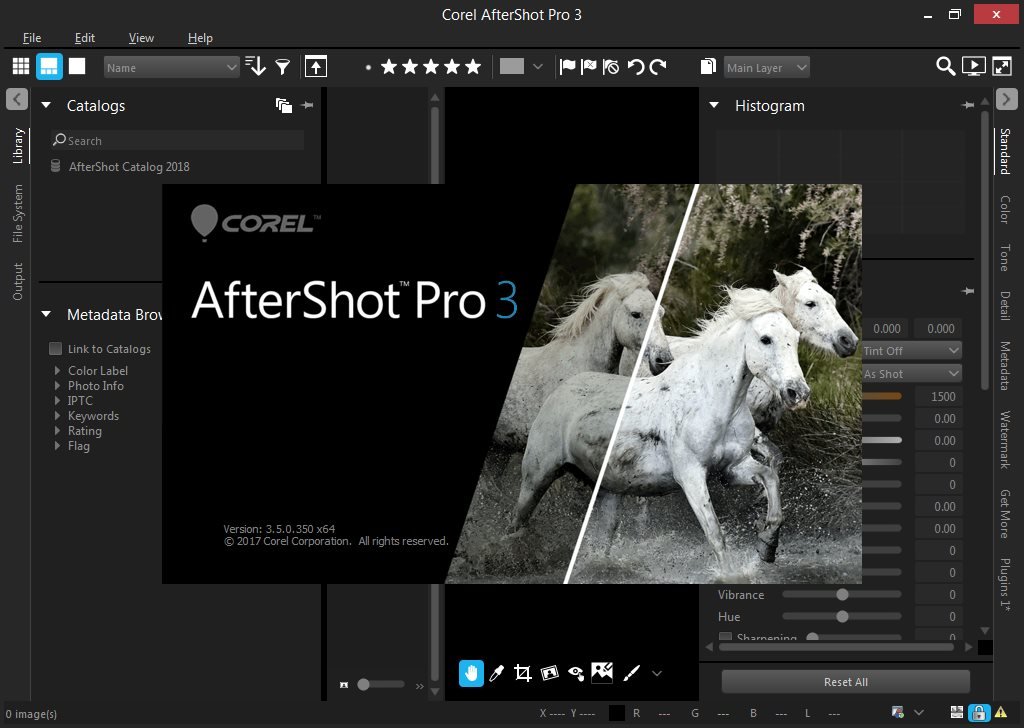

- Corel aftershot 3 exif missing install#
- Corel aftershot 3 exif missing pro#
- Corel aftershot 3 exif missing zip#
- Corel aftershot 3 exif missing download#
In the linux world, one way for a user to confirm that a file is a particular type is to use the file command. I’ll only speak regarding recommendation is addressing the error message which says, “not a JPEG file”. I clicked on the URL given in the output. If multiple applications are complaining about the data, check the data.īut first, I did not know what Corel AfterShots 3 was, so I did: pamac search aftershot It’s a little unclear what error is coming from what application. More information can be found in the manual… man file home/aragorn/Pictures/Vehicles/Lamborghini Huracán/Lamborghini Huracan Tecnica 01.jpeg: JPEG image data, Exif standard:, baseline, precision 8, 1920x1080, components 3 > file ~/Pictures/Vehicles/Lamborghini\ Huracán/Lamborghini\ Huracan\ Tecnica\ 01.jpeg If you want to know what type of file you’re dealing with, then there exists the command file - it’s part of the coreutils package and thus it’s installed by default… file /path/to/the/fileĪn example:

As such, it won’t be using the UNIX-native manner of identifying a file based upon its “magic bytes”. You also mention Corel AfterShots, which is (to the best of my knowledge) not GNU/Linux software, and even if you did indeed find a version of it that runs on GNU/Linux, then this will not be UNIX-native software, but rather just a recompiled version of its Windows sibling. Graphical file managers don’t always follow through on this, and as such, it may happen that they misidentify a file of being of a certain type because of the filename suffix. Unlike Microsoft Windows, which identifies a file as being of a certain type based upon the filename suffix, UNIX systems look at the contents of the file to be able to identify the file type, and more specifically, they look at the first couple of bytes in the file, called “the magic bytes”. It doesn’t have anything to do with the filename, but rather with the identifying “magic bytes” at the start of the file. AfterShot should now load uncompressed DNG files from your camera.As for the Not a JPEG file: starts with 0xff 0xff - none of the images have 0xff 0xff in their name.Or just copy the folder in to the Cameras (64-bit) folder in your AfterShot config directory.
Corel aftershot 3 exif missing install#
afzcam and use the file -> install camera command on your hacked camera profile.
Corel aftershot 3 exif missing zip#
Either zip the file back up, and rename it back to.Add *.dng *.DNG to the fileFilter field.Change qualName to qualName="DngReader".My Model name reads Canon EOS 5D Mark III. For example exiftool -Make or exiv2 -K Make -pt. You can use exiftool or exiv2 to do this. You can find this string if you view the metadata of a raw image from your camera. Change the modelName="" line to read the exact model name of your camera from the exif data.We will change a few lines to make a new camera profile that will work with DNG files shot with our camera. Go inside and find the Info.afpxml file.

afzcam file and rename the file extension to. For example, I have a Canon 5D Mark III so I downloaded the Canon 5D Mark IV profile.
Corel aftershot 3 exif missing download#
Corel aftershot 3 exif missing pro#


 0 kommentar(er)
0 kommentar(er)
